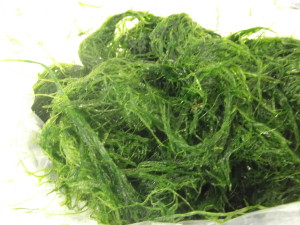文字サイズ
Tokushima Prefecture
Awa beef is a type of Japanese black beef grown with affection by beef cattle producers in Tokushima Prefecture with their highly outstanding fattening technology. The color tone of its fat, a soft texture of marbled meat almost melts, and the deep flavor spreading in your mouth is highly praised in the market.
Among Japanese black beef grown in a warm climate and abundance of nature, only the beef with a fine pedigree, which is given a grade four or above on the Japanese Meat Quality Score, can be called “Awa beef”.
It is suited for either Japanese or Western cuisine, but the most recommended way to enjoy the taste of Awa beef is simple cuisine such as Shabu Shabu (Japanese hot pot) and steak.

It was developed by the Livestock Research Division, Tokushima Prefecture, with their cutting edge breeding technology. The characteristic of the quality of boar meat (vivid color of meat and flavor of the fat) is well presented. This is the highest class brand and offers a safe quality providing its traceability and DNA identification.

In Tokushima Prefecture, we try to utilize hunted game and encourage local business,
so we name our gibier (game) meat/products “AWA GIBIER(阿波地美栄)” in the hope that the gibier business brings beautiful prosperity to the land (地 means land, 美 means beautiful, and 栄 means prosperity). We promote the dissemination of gibier cuisine and its consumption.
Red sea bream is commonly called the “king of fish”. Among the red sea bream, those buffeted in the Naruto Strait with rapid currents are the best.
Some Naruto sea bream are said to have “lumps” on their bones to swim in the rapid currents of the Naruto Strait.
The crunchy texture of the firm body and appropriate quantity of fat have a good reputation. Especially, red sea bream just before spawning in spring are called “Sakura Dai” (cherry blossom sea bream); they store moist fat and become even tastier.
In Naruto City, they are caught by a “fixed netting” called “Tai Ami” or a “pole-and-line fishing” (fishing by hand). Sea bream are handled gently and sent to all the places from Keihanshin to Kanto region.

Hamo catch of Tokushima Prefecture is one of the top ranking, although it is normally considered as a characteristic of Kyoto. It is one of the must-eats in summer in Kansai, and “Hamo no Otoshi” (parboiled pike eel) is especially famous.
Surprisingly, it is not well known that it is also called “Matsutake Hamo” (Matsutake mushroom pike eel) and “Kin Hamo” (golden pike eel) around October, another good season, in Kyoto and is highly prized as the ingredients for a hot pot, etc.
Steamed, Teriyaki (broiled with soy sauce), graze-grilled and Tempura are also recommended.
It tends to be thought of as an ingredient for Japanese cuisine, but it is also well suited for meuniere (fried with flour, lemon and parsley) and frying.

Bigfin reef squid is the king of squid, as you can enjoy its
concentrated sweetness and tastiness. It is suitable for freezing, as it never loses its tastiness. Local fishermen say, ”Its sweetness and tenderness are enhanced by leaving for one year.” The unique technique, hitting with a hammer, using wooden hammers, helps delay bigfin reef squid from becoming whiter and maintains its transparent appearance. The storage method for shipping is also paid thorough attention.

The sea in the south of Tokushima Prefecture combined
with the Pacific Ocean and Kii Channel has many reefs. The reefs are the best fishing ground where plenty of seaweed, food for abalone, such as sea oak grow. When the fishing season starts, free-diving fishing by Ama also
begins. They pick abalones stuck on the rocks with special fishing tools.The flesh of abalone grown in the best environment is thick and
large. The more you munch its crunchy flesh, the more you can taste sweetness with an aroma of seashore.

Green laver produced in Tokushima accounts for 70 to 80
percent of the national production volume. Talking about farmed, Tokushima’s green laver accounts for 98 percent. The fishing ground is vast as it is from the estuary (1.3 km width) flowing to Yoshino River (nicknamed Shikoku Saburo and it is often flooded) and Kii Channel, to the estuary weir (14km from the estuary). Although it is called ”farmed”, its seeds are all natural. Green laver grows firm, thin and long in the blessing Yoshino River. That is why it has unique aroma to whet your appetite and deep dark color to make dishes even more attractive.

Ayu is also called sweetfish, named for its rich flavor. In
Tokushima, it is farmed, using drawn-up underground water from clear streams such as Yoshino River and Nachi River. Thorough control of food quality and water which affects its flavor enables ayu to grow healthily and in high quality with an appropriate amount of fat. Grill it with salt to enjoy crispy skin and delicate taste of fine fibrous flesh. It is also rich in nutrition as you can eat the whole fish from head to tail! Ayu with roe sold from late summer is delicious, too.

Copyright © Tokushima Prefecture, All rights reserved.